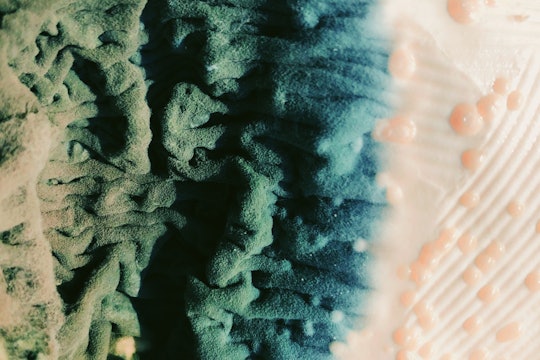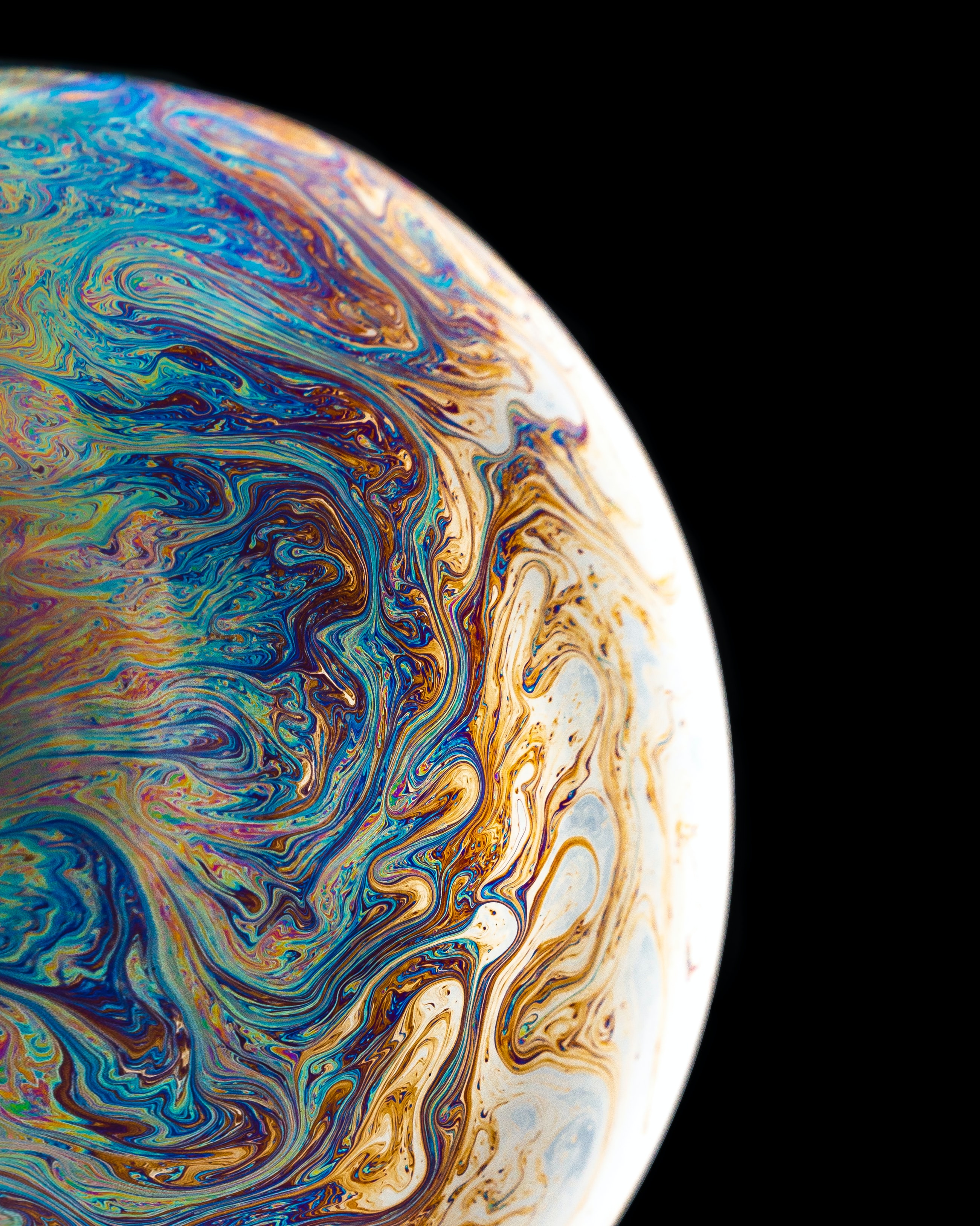
Photo by Bruno Figueiredo on Unsplash
Our concept of life is too Earth-centric — alien life might look totally different
There are over 100 scientific definitions of "life," and none might be accurate outside Earth
What does it mean to be alive? Science, shockingly, still doesn't have a consensus. For example, is it fair to say that the novel coronavirus now sweeping the world is alive? The short answer is there isn't one agreed-upon answer — for something so basic, you'd think life would be easier to define.
The first recorded definition of life came from Aristotle in ancient Greece, around 350 BC. He posited that to be alive, something must grow, maintain itself, and reproduce. In contrast, the most well-known modern definition is probably NASA's, which says living things must be "a self-sustaining chemical system capable of Darwinian evolution." Take, for example, great apes: given appropriate resources like food and water, the "machinery" of a great ape — its organs and nervous system — regulates itself, keeping the great ape functioning in most conditions. They are also capable of evolution — just look at us. But this isn't the only accepted definition of life. There are actually over 100 published definitions!
A lot of the debate comes down to the fact that the various fields of science approach the topic quite differently. A geneticist, whose focus is on known organisms and their genomes, will very likely have a different view on what constitutes life than an astrophysicist, who considers a more expansive, universal definition.
But beyond that, most of these definitions of life fall short in another, very subtle way: They are based on the origins of life on our planet. This means our hypotheses for what sentient and conscious aliens look like almost always reflect humankind. You only have to look at a Star Trek episode to see it — humanity likes to make the world in our image, which is partially why in sci-fi and fantasy a lot of the "aliens" look a lot like ourselves. (Okay, and because it's easier to dress a human up as a humanoid alien).

Our search for alien life might be impeded by our conception of it
Photo by Dino Reichmuth on Unsplash
But a lot about how life arose on Earth is still unknown. For instance, there is a hot debate right now about whether the first genetic material was RNA or DNA. We also don't know whether life emerged from what a once popular theory scientists dub the "primordial soup," which was thought to be a complex concoction of organic and inorganic molecules covering Earth's surface billions of years ago, or if it came from energy flowing from deep sea hydrothermal vents. Yet, as far as we know, there are certain undeniable things that were important for the development of life on Earth, and therefore (we assume) for life in general. These are:
- A need for energy. Nothing in the universe can move without having some way of obtaining energy. This is the first law of thermodynamics. In humans, this energy comes from metabolizing food.
- Organization in membrane-bound cells. This one in particular seems specific to Earth, as all our living organisms are made of cells.
- An ability to store genetic information. On Earth, DNA stores our genetic information, which serves as the blueprint for the development of every living thing. It would be pretty difficult to make life without a blueprint.
- An ability to replicate with variation. Life would not be prosperous without being able to create offspring; the world would eventually return to being a wasteland after one generation of organisms died out. Producing offspring with variation goes back to the idea of Darwinian evolution. Being capable of evolution allows for population change over time, an important part of creating new forms of life.
- The ability to grow and respond to stimuli. What distinguishes a human from a robot is our ability to synthesize information and use this information to make decisions that help us out in our environment. Life would not prosper without the ability to make changes, it would remain static. And static things rarely survive.
But there are a few remaining problems. For one, even using these five criteria, not everything on Earth can nicely be classified as "living" and "non-living." A classic example of this is viruses. A virus adheres to all of the above characteristics of life: It needs energy, is bound by a membrane, can store genetic information, and grows and replicates repeatedly. However, viruses themselves are generally not considered alive, because they rely on other living cells to replicate. A lot of biologists chafe at this narrow definition. A tapeworm is considered living, even though it can only reproduce inside another living organism. So why not viruses?
If our definition doesn't even work correctly with the systems we observe on our planet, it's incredibly likely that in the larger universe there will be systems that break this definition as well. For example, included in most of the 100+ definitions of life is the ability to self-replicate with variation — one of the fundamentals of Darwinan evolution. But it's perfectly reasonable to picture "supra-Darwinian" life, which arose by pathways that don't exist on Earth.

Reproduction with variation is a key component of our definition of life
For instance, say we find a planet full of aliens who have achieved immortality. The population has been stable for thousands of years, with nobody being born and nobody dying — in other words, there is no self-replication going on. There is no variation. Everything is static. There's no evolution. Would this alien species be considered living under our current definition? And should it be? Of course, this is a wild theoretical, but as we learn more about the immense universe, this kind of questioning will be important to consider.
Another problem is that even though we have a huge diversity of life on our planet, we might only ever be able to trace life back to a single origin. A single random accumulation of events resulted in that first cell or that first organism. But research has acknowledged that there are many alternative biochemistries and biologies that could have arisen from the conditions on early Earth. The world would probably look a lot different if, for example, silicon were the basis for all organic compounds instead of carbon, a theoretical possibility.
Yet all the tests that we currently use to find life on other planets strictly take our carbon-based system as the norm. For instance, in 1976 when the Viking I first landed on Mars, it was rigged with only a few kinds of tools to probe for life on the red planet. One was a radioactively-labeled carbon species, 14C, that the robot mixed with a small sample of Martian dirt. Researchers speculated that if there was life on Mars, the life would metabolize the radio-labeled species and produce radio-labeled carbon dioxide, the way Earth life forms would. This didn't work. It probably didn't work because there isn't life on Mars. But it also could have been because we were specifically testing for life that metabolized carbon just as life on Earth does.
Here is an even bigger hypothetical: why do we even assume that all life in the universe is composed of the same matter that we are? Ordinary matter only constitutes a very small fraction of the total energy produced by matter, leaving a gaping hole in our knowledge of the composition of the universe. The rest of the energy is made by mysterious dark matter, something that only physicists and cosmologists generally spend much time contemplating.

There could be a whole system of life made of the universe's dark matter
Photo by Daniel Olah on Unsplash
But since so much of the universe is composed of dark matter, which we currently don't know much about, it could be having interactions and impacts we are not aware of. If that's the case, there could very well be an entire system capable of producing life made up of dark matter. Carl Powell, a famous science writer, even coined the term "light matter chauvinist" to describe humanity's hubristic belief that the matter we are made of is the only thing that is significant.
Our working definition of life is hugely flawed because it is based off the limited evidence we have of an infinitely large universe. As far as we can tell, Earth is the only "living" planet, so it's obvious that we assume that our path towards life is the only way. And that's totally okay, because one of the main tenants of science is that it's okay not to know — as long as you keep asking questions.
NASA's definition of life is a good one, when applied to living things on Earth. It covers most of the basics. But any idea of life as it applies to aliens must be unbounded. It should not make any assumptions about other life systems just because our system worked. Otherwise, we risk missing things completely. The universe is an open slate, and therefore our idea of "alien" life must be as well.



A study was published in PNAS this March that gave evidence that a particular species of fish parasite lost its ability to perform aerobic respiration. This particular organism challenges our idea of what an animal is; not all animals require oxygen to power their cells. I bring this up because I believe it speaks to the idea of your very intriguing article. We, as humans, try to categorize the world around us, but we need to remember that these classifications are not rules, they are our observations.
As you mention above, it will be important to consider what is possible over what we believe to be probable moving forward in astrobiology research. This will require some abstract thinking on the part of researchers and very convincing grant proposals!